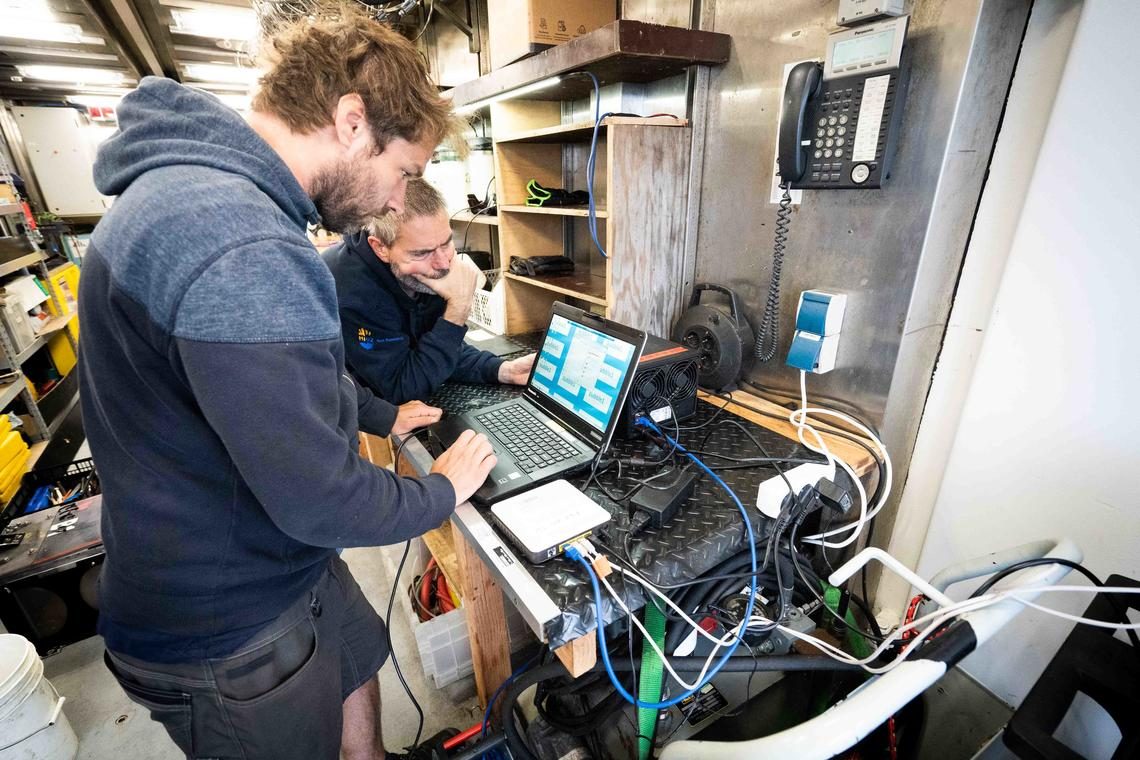“Wait, stop, back up! There were bubbles back there!”
With a cry and dramatic gesture to the screen, GEOMAR scientist and shipboard bubble expert Jens Greinert grabbed all of our attention.
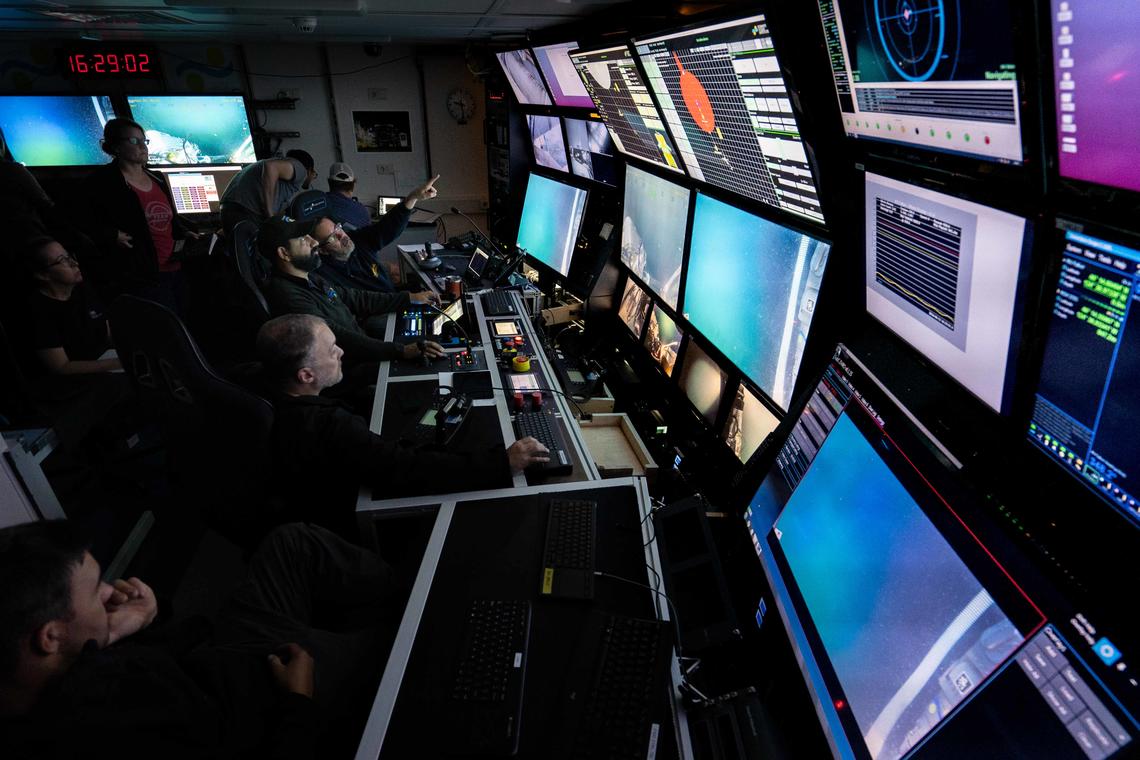
In a real sense, this is what we came for: These bubbles contain the methane coming from the seafloor at those seep environments. They are the base of the food webs that Jennie and Amanda described, and theya re the foundation of the geology that we will cover in future blogs. And at the moment, they are the target of one of the critical pieces of equipment on this cruise: the BubbleBox.
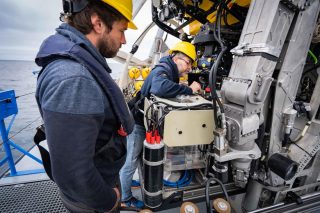
The BubbleBox
The BubbleBox is a tool developed by Jens and his colleagues at GEOMAR to measure both how much gas is coming out of the seep and what the shape, size and rising speeds of these bubbles are. GEOMAR engineer Tim Weiss explains how it works:
“First, the ROV locates a seep area with active gas release, then maneuvers the BubbleBox over the bubbling vent and either places it on the seafloor or holds it just above it. As the bubbles move through the Bubble Box, twinned high-resolution cameras take rapid-fire pictures (80 per second) of the bubbles. Then, a computer algorithm processes the images, removing the background and identifying, measuring, and counting the bubbles. By using paired cameras, we can create three-dimensional, high-resolution images of these bubbles and model their shapes as they move through the water inside the BubbleBox.”
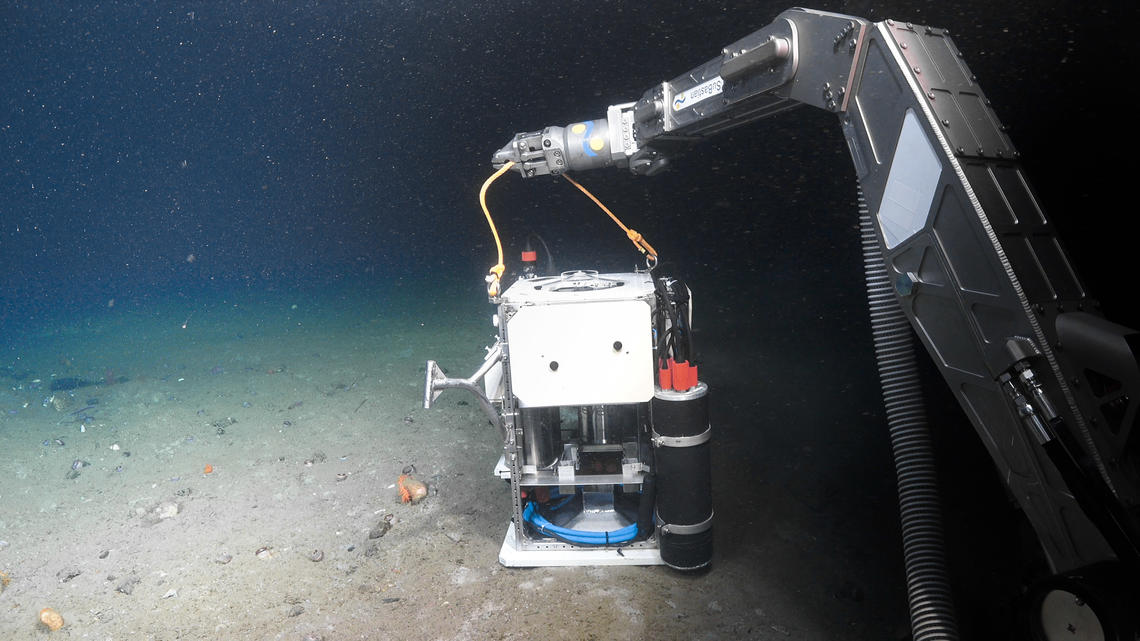
Sizing Things Up
So why are we looking at bubbles in such detail?
“The biggest reason is to help figure out how much gas is coming out of the seeps,” said Tim. “That’s one of the main goals of this cruise.”
By getting an idea of how large the bubbles are and how many of them are coming out, we can estimate the volume of gas escaping the seafloor at this particular site. And that helps determine how much food is available to the creatures living here and how much methane carbon is leaking into the ocean.
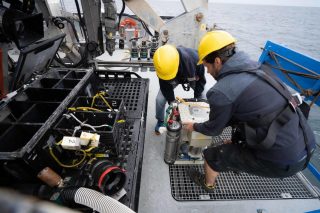
The information from the Bubble Box will then be paired with hydroacoustic data from an echosounder onboard R/V Falkor to give an idea how much gas is coming out, not just at a particular moment, but also over time. The hydroacoustic data gives us the information on the stream of bubbles, and the Bubble Box gives us the particulars on the bubbles within the stream.
But the Bubble Box also sheds light on a whole host of other fascinating aspects of bubbles that Jens was only too happy to describe.
How Long Does a Bubble “Live?”
When you blow a bubble under the pool, how long does it last? Until it reaches the surface and pops, right? What if the source of the bubble is not just a few feet below the surface, but instead hundreds or even thousands of feet down?
“The general rule is that if a methane bubble starts more than 100 meters (328 feet) below the water surface, its chances of making it to the surface are very slim,” said Jens. “So down here, at four hundred, five hundred meters, or eight hundred meters even, there’s almost no chance the bubble will make it to the surface.”
But what happens to it? Mostly, the gas of the bubble dissolves into the water. As the methane bubble pops out of the seafloor, it represents a super-high concentration of methane close to the seafloor, while the surrounding ocean water has a much lower concentration of methane.
“The water and bubble methane concentrations are not in a chemical equilibrium,” explains Jens. “Immediately, the ocean starts trying to rectify this imbalance by dissolving the methane bubble into the ocean water.”
There are factors that can change how long the bubble dissolution takes. The larger the bubble, the longer it lasts. Another factor that can change how fast bubbles dissolve is a protective barrier around the bubble.
For methane bubbles emitted from the seafloor more than about 500 to 600 meters in depth, one common armor is gas hydrate. Gas hydrate is an ice-like crystalline substance composed of water and gas molecules arranged in a specific way. A thin gas hydrate coating can enclose the bubble and trap the methane inside. As long as the bubble stays within the pressure and temperature zone where hydrate can exist, the bubble will last much longer.
A Deeper Concern
Determining the fate of the methane that comes out of these seeps is one of the primary goals of this research cruise. Not only do seafloor organisms depend on methane for food, but methane also fuels bacterial processes in the water column.
And so Jens and Tim will take their BubbleBox to each of the seeps we visit and capture every angle of these silvery orbs as they rise from the seafloor.
